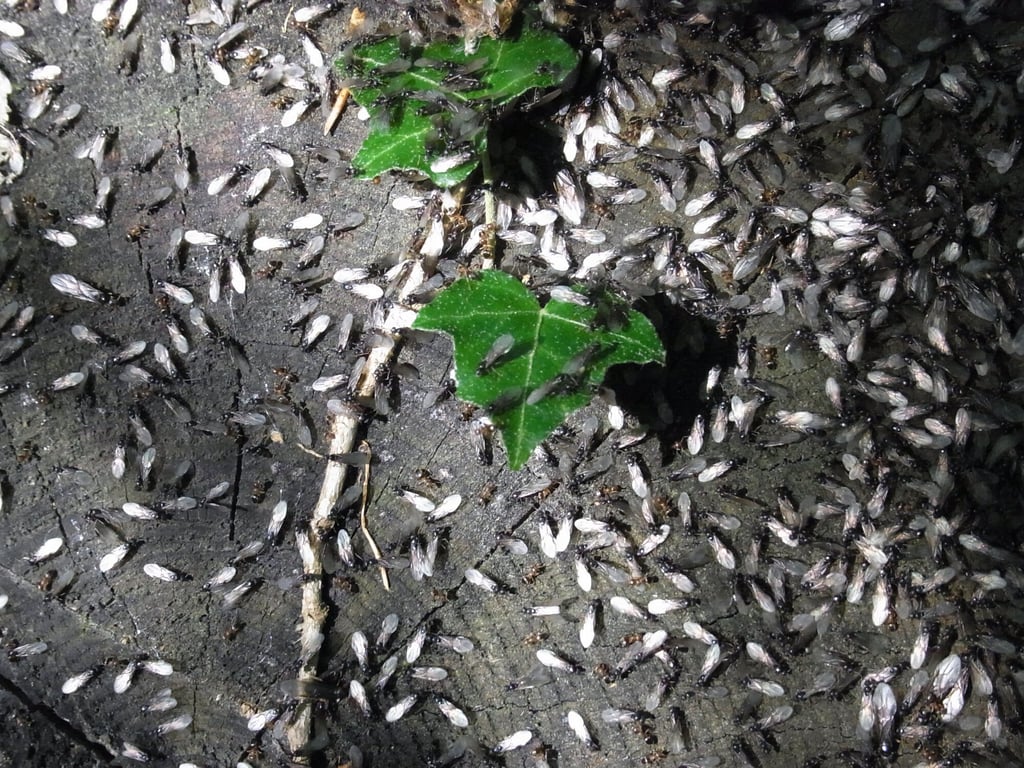Your Cart is Empty

Experts estimate that the world's total ant population is around 20 quadrillion. You'd think that would make it easier for ant farm hobbyists to find queens. But ants are still very small and the world is very large.
Plus, there's usually only one queen and tens of thousands of ants per colony. And she usually stays underground until it's time to find a new colony. If you want to start multiple colonies of your own, you'll need to work hard to capture ant queens.
Read on to learn how to catch a queen ant.
By strict definition, a queen ant is an adult female ant that produces all other ants in an ant colony. They'll often have longer lifespans than the worker ants in a colony. When the queen dies and there's no replacement, the colony will usually die along with her.
Also, queens usually only need to mate once. They can keep the sperm from the male ants they mate with for a long time. They will slowly use this sperm to fertilize eggs over several years.
Beyond that, the details can differ between different types of ants. Because this is the case, you should do some research on the ant species you're seeking.
Certain species, such as carpenter ants, often have more than one queen in a colony at a time. These queens work together to produce offspring for the whole colony.
Some female ants don't need males to reproduce. They can reproduce via cloning or asexual parthenogenesis. All of this queen's offspring will be female.
An ant colony also doesn't necessarily have to die when the queen dies. When the queen of an Indian jumping ant colony dies, the worker ants will start fighting each other. Whoever wins the fight will become the new queen.
Ant-keeping is a fairly popular hobby. So why can't someone just breed queen ants and sell them off to other ant keepers? Well, there's a legal reason why they can't do that in the United States.
In a carefully balanced ecosystem, plants and animals keep each other in check. Certain animals feed on plants and others feed on other animals. When they do this, the population of certain species won't grow out of control.
When a foreign species gets introduced to a new area, the ecosystem there can become chaotic. The new species won't have any predators. So their population will grow out of control and deplete natural resources.
Queen ants raised by ant keepers can escape. Then they may form colonies in places where they aren't naturally found. When they do so, they'll cause damage to the local ecosystem.
To prevent this ecological damage, the United States Department of Agriculture (USDA) created a ban. No one can sell queen ants in the United States. This is why you need to find queen ants on your own.
The best way to capture queen ants is to wait for them to start new colonies. During this time, they will leave their ant hill of origin. Before they bunker down, you can catch them.
Queen ants tend to create new colonies at certain times of the year. You can learn when the ant queens in your area will do this in a few different ways. One way is to talk to local insect experts like scientists and even local pest control companies.
You can also research the details online. Keep in mind that queen ants will often create new colonies in the springtime in dryer places like the Southwest. In other places, queens may come out in late summer monsoons.
It's best to search in an area where there are already several active ant colonies. Remember that queens often come out of other ant colonies. It will also be much easier to check several ant colonies at once in a highly populated area.
On top of all this, places where ants already thrive should attract a queen ant. Look around spots close to several colonies but undeveloped.
Queen ants and males usually walk out of their parent colony with wings. They'll test the weather first before flying off to mate. If you just want a queen ant and not a colony starter, you can grab one at this time.
You can identify a queen ant mostly by her size. She'll be much larger than the worker ants. Her thorax, the middle section of an ant's body, will also be half her size.
The queen, who has mated, will be wandering around erratically as she searches for a colony location. She will also likely have pulled off her wings. If you want to start a colony with a queen ant, capture a queen ant during this time.
There are two ways to carry a queen ant before you put it in an ant farm setup. A prescription pill bottle is a good-sized container. Put a damp cotton ball in the container so that your queen gets plenty of water.
You can also use a test tube setup. Fill up half the test tube with water and push a cotton ball down until it blocks off the water but isn't soaking wet. Put the queen on the cotton ball and use another cotton ball to block the entrance.
Now that you know how to catch a queen ant, you should be able to start an ant colony. Good luck with this fun and fascinating hobby!
If you need any ant farm supplies, get them from us. Here at Everything Ants, we have everything you need to keep your ant colony healthy and comfortable. Check out the ant supplies we have in stock on this page.